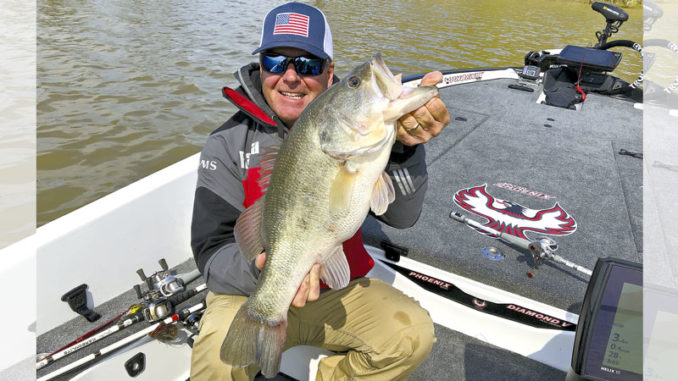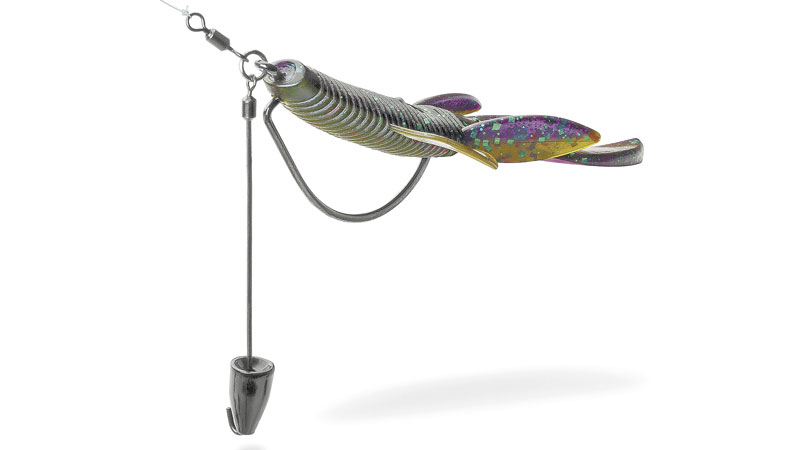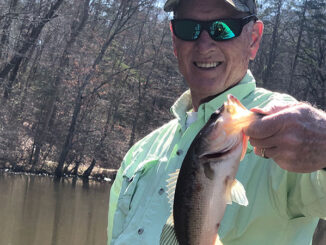
February, early March are unmatched for Carolina lunkers
I have long believed that the best time to catch truly big bass — the bass of a lifetime — is before most other fishermen even give it a thought.
In other words, February.
February to mid-March is definitely the best time, here in the Carolinas, to target big fish. You can’t beat it. It’s a big reason why you need to start fishing late in the winter, before the trees start budding and everything gets going.
They’re out there, and they’re ready to be caught. But you need to go out with the mindset that you’re not fishing for numbers of fish. Instead, you’re taking advantage of the opportunity to catch the fish of a lifetime.
Several reasons contribute to this. In February, big female bass move from the main lake or main river to the mouth of creeks, and they are feeling good. They’re full of eggs. So they’re the biggest they’ve been all year, and they haven’t been pressured. Oh, they see a few lures, but not like they’ll see later on.
I think big bass are like big bucks. Big bucks feel pressure during deer season. And when they do, they’re less likely to make a mistake. I think it’s the same way with bass. I think a big fish understands that seeing all those different lures, hearing outboard motors running and feeling the ping of our electronics — that’s pressure.
Fewer people have been fishing in December and January, and that’s a big deal. And the other thing is, these big females are loners. And they’re beginning to feed this month, to move up to the places they stage, to think about spawning.
Longer days
It’s not all about water temperature. That certainly plays a role, but it’s really the length of the days, and maybe the moon phase — just like the deer rut. The water temperature may still be in the upper 40s or lower 50s. But those big fish start to move up out of deep water. Mother Nature is calling them in for a lot of reasons. Bass know that getting up in shallower water helps their eggs mature. That’s why it’s time to go fishing in the Carolinas.
The first step in getting ready for a trip to target the biggest girls out there is to decide on baits. And you have to use baits that are going to catch big fish.
I am going to have three different baits tied on when I had to the lake in February, whether I’m going to Santee Cooper or Lake Murray or Lake Wylie or Buggs Island. I love to fish a Mop jig; it’s a great big-fish bait. I’m going to be fishing a 1/2- or 5/8-ounce Mop jig in brown, or blue/black if the water is a little dirty. I’ll use a Yamamoto Flappin’ Hog for a trailer. If the water’s clear, it will be watermelon red or green pumpkin. If the water’s a little stained, it will be black/blue. Those are my base colors.
This is a big, bulky bait, and I’ll fish it on the bottom. If I’m fishing on a high-pressure day, I’m going to be crawling it across the bottom 100% of the time. And I’ll definitely be fishing it much slower, because while they’re feeding more, they’re not chasing yet. The water isn’t warm enough for that.
Suspending fish
Second, I’m going to fish a jerkbait like a Shad Rap Deep in herring or natural shad colors. A jerkbait is a great bait because when you get a low-pressure system coming through, a real nasty day to be on the water, sometimes those fish will suspend. And that’s when you catch ‘em on a jerkbait.
I wind the bait down to where I want it, then I start my retrieve. In this case, cadence is everything. I slow things down a lot in February. I might give the bait a couple of twitches, then let it sit three or four seconds, then twitch it again. Most other times of year, I won’t let it sit still more than a second. But in February, you need it sitting there, still, where the bass can get it without chasing.
The third way I like to fish for really big fish is with a VMC Tokyo Rig. Now, I’ve only learned how to do this in the past year or 18 months, but it’s a deadly way to present a big bait to a big fish because it’s a vertical presentation. It’s sort of like fishing a drop-shot rig, but with a big bait, not a little shaky head worm.
Rigging a Tokyo rig
A Tokyo rig is a wire about 4 inches long that attaches to a split ring. You thread the split ring through the eye of a big worm hook — 2/0 or bigger — and your line ties to the split ring, or you can use a barrel swivel on the end of your line. I like to use two tungsten weights on the end of the wire, anywhere from 1/8- to 3/8-ounce weights. I use two smaller sinkers instead of one big one, because they make a lot more noise when they touch or clang around.
I’ll usually fish a creature bait or a big worm like a 7 1/2-inch Yamamoto Kut Tail worm or a Senko on a Toyko rig. I want that big, bulky bait, but what I really want is that vertical fall you get with a drop-shot rig. And all this is, is a beefed-up drop-shot rig. It has a very different fall from a jig or a worm. The weight is below the bait, so it falls vertically. When a jig or worm falls, even though it falls almost vertically, the line still pulls it down at a little bit of an angle. A vertical fall triggers a bite from a big fish better.

Shallow/Deep
Now, where are you going to target these big female bass? Two words: shallow/deep. You want to fish close to deep water, but not in deep water. Both male and female bass are moving up. But males tend to roam and go to the bank more. You’re really looking for that first drop, that first good contour break. They want to be shallow, but they’re not ready to move up onto a flat yet. When I look at the Lakemaster maps on my Humminbird depth finders, I want a place where the contour lines are close together. If I’m fishing a ditch, I don’t want to be up on the flat, but I don’t want to be fishing the bottom of the ditch, either. I want a place where there’s a difference of at least 10 feet between where my boat is sitting and where I’m casting.
If I’m fishing a section of a creek, I’m going to be looking for those areas where the drop is steeper, where you have shallower water close to deep water. In these places, bass move up when the water warms a few degrees. That puts them in places where they can feed.
Let the sun get up
Here’s one other tip. Most of the year, during spring, summer and fall, I think the time right after sunrise and right after sunset are the best times, nine out of 10, to catch a big fish. But not in February or early March. This time of year, when the water is just starting to warm up, the fishing can definitely be better on up into the day, when the sun’s had a chance to get on the water and warm it up some. That will really get bigger fish moving.
So, don’t spend your time off watching college basketball or puttering around the house. You should already have your tackle ready. Tie on the right kinds of baits, look in the right kinds of areas, and really concentrate on big fish. You might just catch that big one you’ve been waiting for all these years.





Be the first to comment